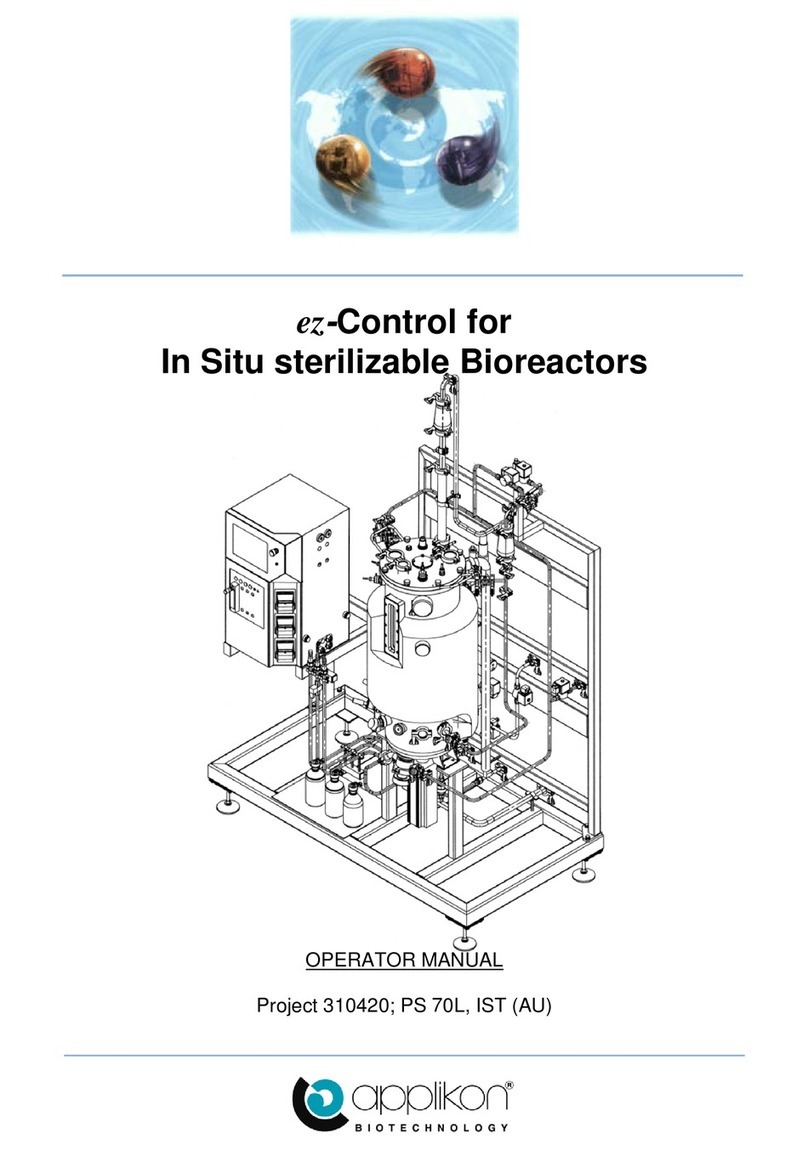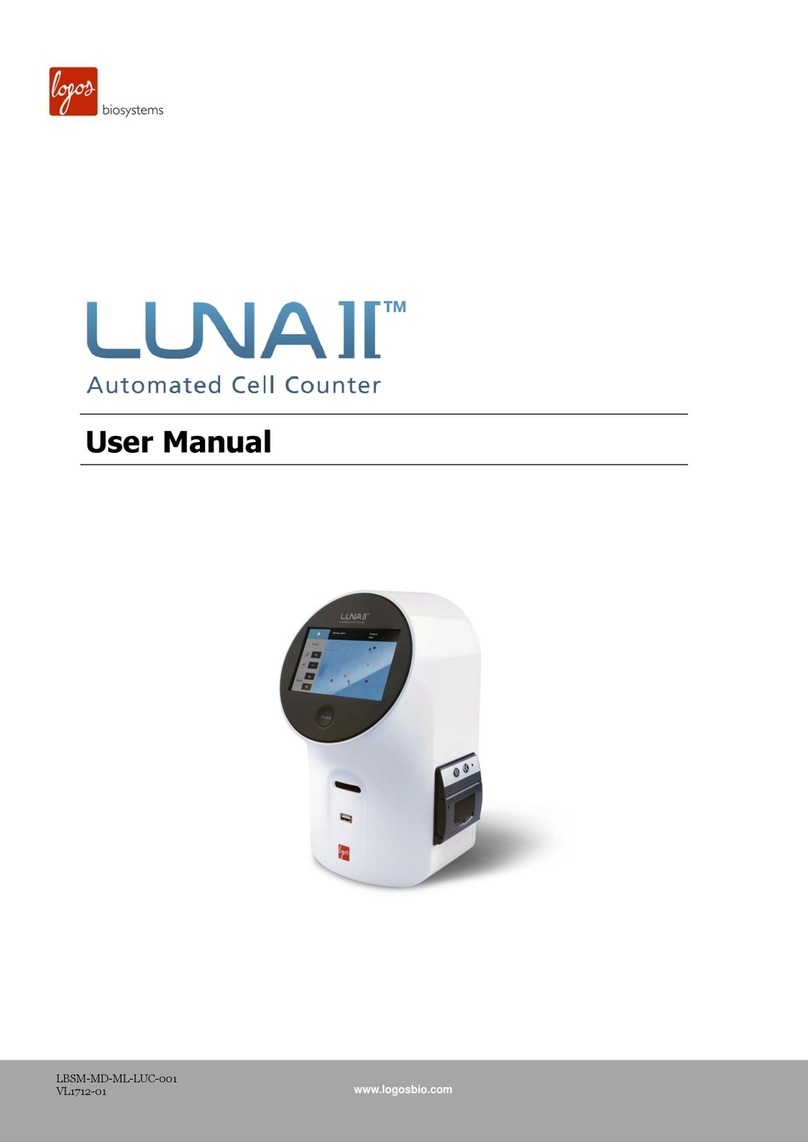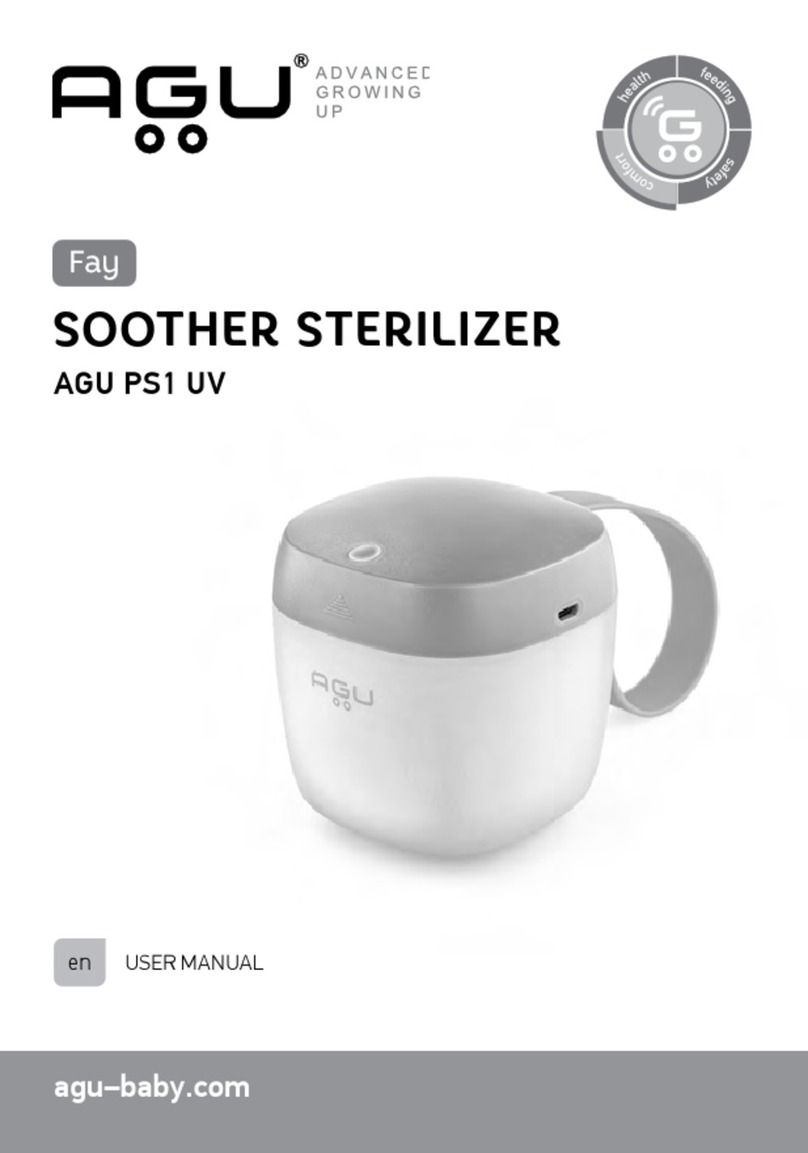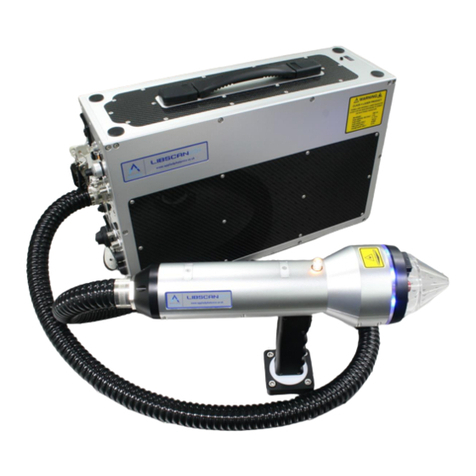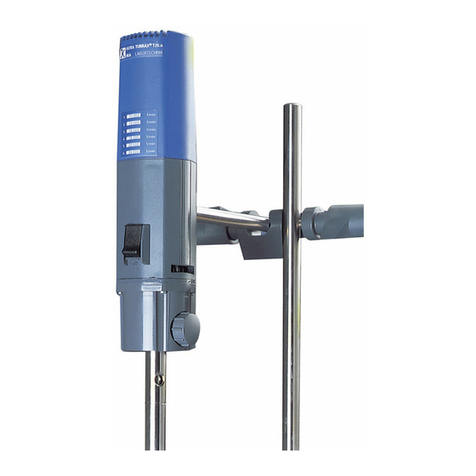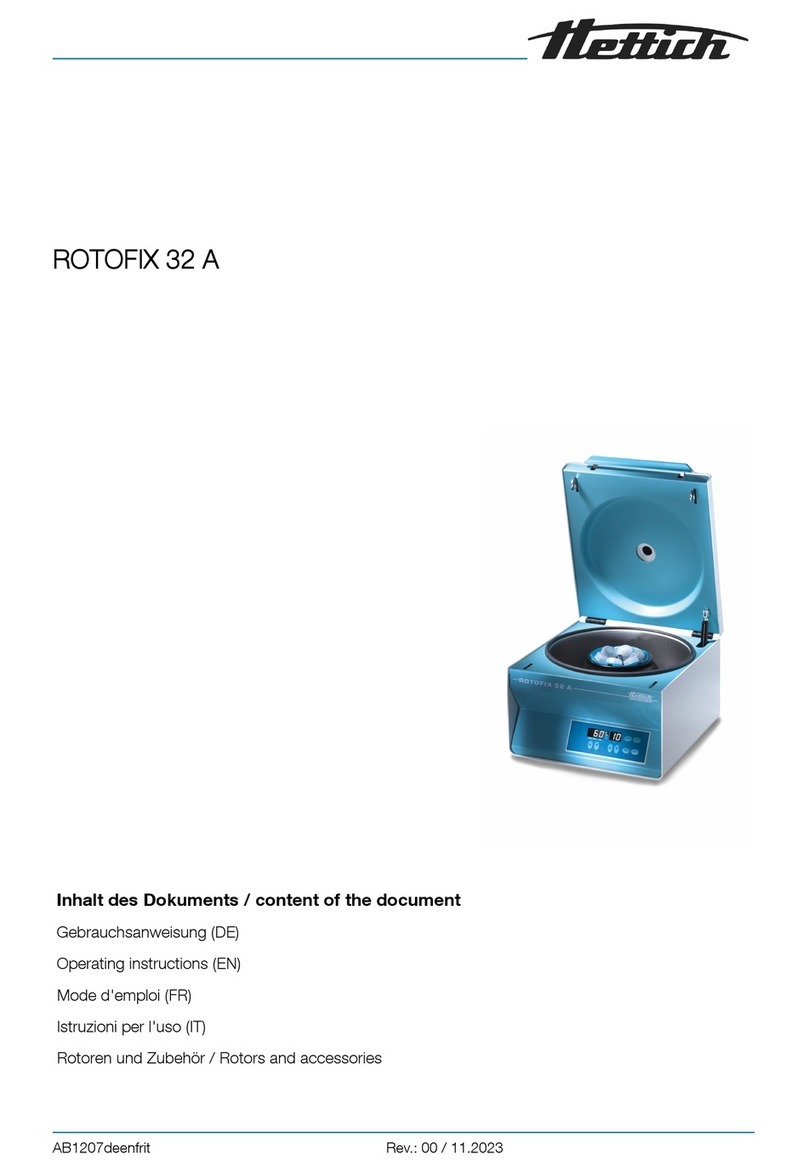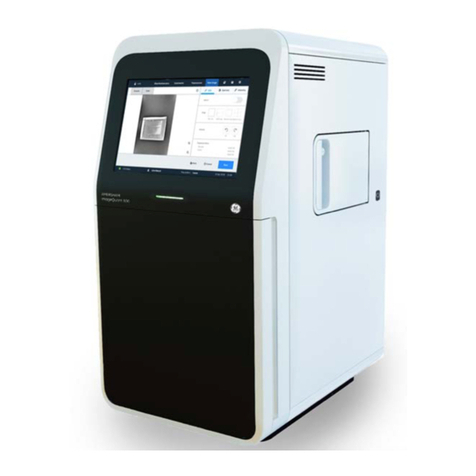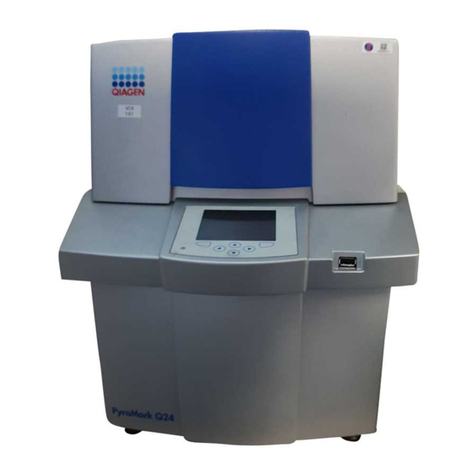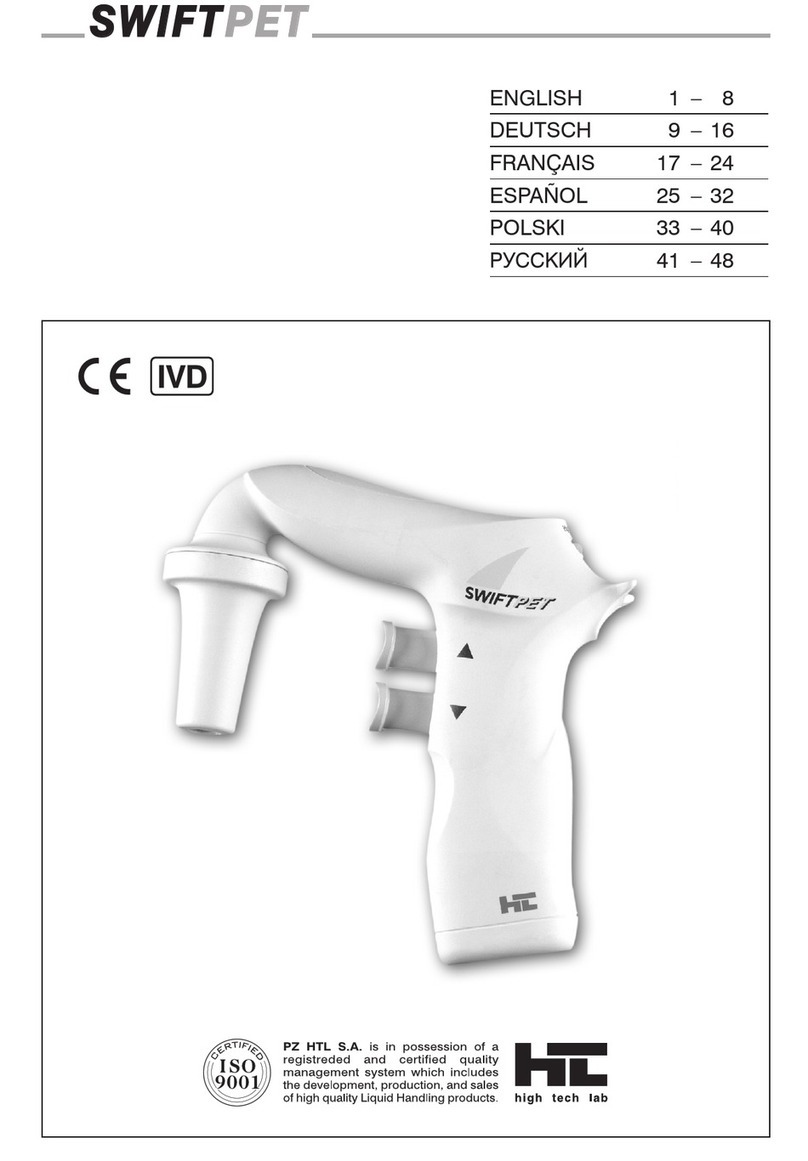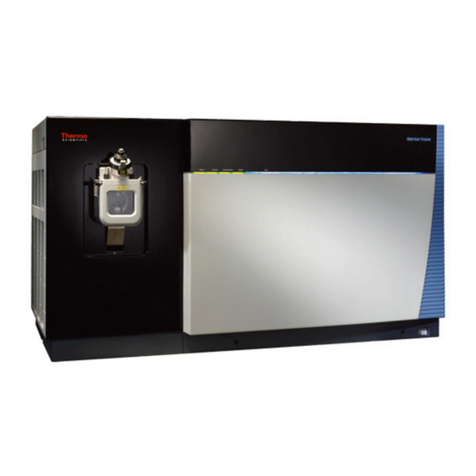Matest E094 User manual

Instruction Manual
“AUTOMATIC LABORATORY MORTAR MIXER”
Product Code
E094 / E094T / E095
Do not attempt to operate this equipment before reading
and comprehending the manual in all its parts
Users
MACHINE MANUFACTURERS |DRAUGHTSMEN |OPERATORS |MAINTENANCE WORKERS |ANY OTHERS
REV.
DESCRIPTION
MANAGED
APPROVED
PRODUCT CODE
PAGES
ISSUE DATE
02
User manual
Technical
Office
Chief
Technician
E094.M01.EN.02
15
01/2007
Matest S.p.a. Via delle Industrie 25, 24048 Treviolo (BG) Italy TEL. +39 035 2055011

GENERAL INDEX
GENERAL INDEX
CHAPTER 1
GENERAL INFORMATION
1.1
GENERAL FEATURES
1.2
IDENTIFICATION
1.3
APPLICATIONS
1.4
STRUCTURE AND OPERATING OF THE MACHINE
CHAPTER 2
SAFETY INFORMATION
2.1
GENER
AL SAFETY STANDARDS
2.2
SAFETY DEVICES
2.3
DANGEROUS PARTS AND RESIDUAL RISKS
2.4
NOISE
CHAPTER 3
INSTALLATION
3.1
LIFTING
3.2
UNPACKING
3.3
INSTALLATION
3.4
ELECTRIC CONNECTIONS
CHAPTER 4
MACHINE FEATURES
4.1
DIMENSIONS A
ND MASS
4.2
CALIBRATION
CHAPTER 5
OPERATOR INTERFACE
5.1
DESCRIPTION ENCLOSURE B/C
–
STANDARD CE MIXER
5.2
DESCRIPTION ENCLOSURE E
–
CONTROL PANEL
CHAPTER 6
APPLICATION
6.1
WARNING
6.2
SWITCHING ON THE APPLIANCE
6.3
TOOLING U
P
6.4
PREPARATION AND POSITIONING OF THE MORTARS
6.5
EMERGENCY STOP
6.6
STARTING AFTER EMERGENCY STOP
6.7
STOP CONTROLLED BY SAFETY CIRCUITS
6.8
APPLIANCE FUNCTIONING
6.9
SWITCHING OFF THE APPLIANCE
6.10
TRIAL STARTING
CHAPTER 7
MA
INTENANCE
7.1
ROUTINE MAINTENANCE
7.2
SPECIAL MAINTENANCE
7.3
CALIBRATION
7.4
PERIODICAL INSPECTIONS
CHAPTER 8
DIAGNOSIS
8.1
DIAGNOSIS
CHAPTER 9
SCRAPPING
9.1
SETTING ASIDE
9.2
SCRAPPING

2
LIST OF ENCLOSURES
A
COMPLETE
APPLIANCE
B
MIXER E095 (MODEL CE)
C
MIXER E094 (STANDARD)
D
TOOLING UP
-
MIXER (CE / STANDARD)
E
CONTROL PANEL
LIST OF ELECTRIC DIAGRAMS E095
S1
INTERNAL VIEW MIXER E095
S2
POWER DIAGRAM MIXER E095
S3
AUXILIARY CIRCUIT MIXER E095
S4
POWE
R DIAGRAM MIXER E095
S5
CLAMP BOARD MIXER E095
S6
LAY OUT OF PROTECTIONS FOR MIXER E095
LIST OF ELECTRIC DIAGRAMS E094
S7
INTERNAL VIEW
-
MIXER E094
S8
AUXILIARY CIRCUIT MIXER E094
EEC CONFORMITY DECLARATION (FOR EEC COUNTRIES ONLY)

3
CHAPTER 1
GENERAL INFORMATION
1.1
GENERAL FEATURES
THIS MANUAL IS ADDRESSED TO the carrier, the installer, the user, the maintenance operator, the
scrapping operator.
Please read it carefully because it informs you about the operating of the machine in safety conditions.
This manual has to be considered a part of the product and concerns only the machine it is delivered
with.
Keep the manual in order during the whole life of the appliance to consult it for any needs.
In case of sale, the manual and its enclosures should be given together with the machine.
The manufacturer assumes no liability for any damages caused by a misuse of the machine.
The manufacturer has the right to modify this technical literature as well as the machines this refers to
without any previous notice.
Messages meaning:
ATTENTION
This warning refers to all those procedures that have to be carefully followed to avoid
any damage to the machine.
DANGER
This warning refers to all those procedu
res that could present some risks for the
operator if not carefully followed.
1.2
IDENTIFICATION
MANUFACTURER IDENTIFICATION: See the cover page.
MACHINE IDENTIFICATION: See the plate on the machine where complete identification
data as well as electric features are to be found.
1.3
APPLICATIONS
The laboratory Mixer E094 and E095 has been developed for the automatic mixing of the cement pastes
and mortar. This process will result in the preparation of the specimens for flexure, compression tests in
perfect compliance with the EN 196/1 specifications.
This appliance has to be used only for the aim it has been projected and manufactured for.
Any other use of the machine is not permitted.
ATTENTION
The instructions given in this operating manual are
only made for the right use of the
appliance. To carry out the test in the right way, the user must refer to the specific
standards in force for the test itself.
1.4
STRUCTURE AND OPERATING OF THE MACHINE
The appliance is mainly formed by two parts (see enclosure Afor further details):
THE MIXER (B) is made by a metal sheet frame (B9/C9) and by a lower basement of aluminium; a
bowl (B14) is fixed at the bottom, while the electric disposals for the machine control as well as the
motor (B4/C4) are located at the top. A special lever (B7/C7) allows fixing the bowl to the frame. The
electric motor activates the beater (B1/C1), which mixes the mortar.
THE CONTROL PANEL (C) allows controlling the various mixer functions.
For further information please contact the Agent or the Manufacturer.

4
CHAPTER 2
SAFETY INFORMATION
2.1
GENERAL SAFETY STANDARDS
The use, lifting, installation, maintenance and scrapping of the machine are allowed only to
qualified staff. Qualified staffs are composed by people who are authorised by the safety responsible
to do any activities due to their experience and acknowledgement of the operating of the machine and
of the standards, rules and actions.
The user must be carefully taught about the operating of the machine to avoid any misuse of it and
about the safety devices, which the machine could be eventually equipped with. The safety devices
will have to be kept always assembled and to be daily checked.
The manufacturer offers training and assumes no liability for any damages due to a misuse of the
machine by an unskilled staff.
The manufacturer recommends following carefully the instructions and procedures of the operating
manual and the safety standards concerning the safety devices and the general rules of the work
environment.
Verify the accordance of the machine to the standards in force in the State where the machine has to
be installed.
The operating manual must be carefully read by the safety responsible, by the operators and
maintenance engineers. It must always be kept near the machine in order to be able to read it any
times it will be necessary.
Any tampering or modifications of the machine (electric, mechanical etc.) that are not allowed by a
written agreement of the manufacturer must be considered as not permitted and the manufacturer will
not accept to be charged for any damages.
The removal or the tampering of the safety devices will be an infringement to the EEC Safety
Standards. The manufacturer assumes no liability for any damages.
The machine has to be installed in places safe from fire and explosions.
We do recommend using only original spare parts and accessories; on the contrary the manufacturer
assumes no liability.
Be careful that any dangerous situations won’t happen during the working; stop immediately the
machine in the event that it will not work properly and ask the manufacturer or the Authorised Service
Staff of the dealer at once.
The manufacturer assumes no liability for any damages to people, things and animals caused by the
non-compliance of the above instructions.
2.2
SAFETY DEVICES
MEANING: Safety devices are all the safety measures, which consist of the use of specific technical
equipment (guards, cages etc.) to protect the operator from any danger that couldn’t be avoided during
the planning.
FIX AND MOVABLE SAFETY DEVICES
The Mixer is supplied in two versions:
CE VERSION: The mixer E095 has got a protection door (B16), which prevents the opening during the
test so that the operator cannot come in touch either with the internal mechanisms or with the beater
(B1/C1). The door opening causes an immediate interruption of the power feeding; in this way the motor
(B4/C4) and the beater stop moving. The rotation can start again only after the closing of the protection
door.
ATTENTION
It is suggested to open the protection door only when the mixer is not turning, the
opening of the safety door during the working of the appliance must be made only in
case of real and urgent need.
STANDARD VERSION: For the Mixer E094 no safety devices are foreseen.
ACTIVE SAFETY DEVICES
Active Safety Devices are all those disposals and devices, which cancel or greatly reduce the risks to the
operator. They require a conscious and active behaviour of the operator to be activated.
In every appliance there’s a main switch (B13/C13) acting also as emergency switch.
By activating it, the feeding to the mixer is disconnected and therefore also the beater (B1/C1) stops
moving.

5
2.3
DANGEROUS PARTS AND RESIDUAL RISK
The dangerous place is the space inside and around the machine where the operator could be wounded
or damaged.
During some procedures the operator could face some risks of danger.
The risks can be eliminated following carefully the procedures written in this manual and using suitable
safety devices.
ATTENTION
In case the manufacturer does not make the installation, use only people instructed on
the installation of the specific appliance.
GENERAL INFO
Before starting the standard use of the equipment, ensure that all the components are in
good working conditions, check there are no detective or damaged parts. If necessary repair
or replace any damaged part.
Pay attention to the possibility of electric shocks (both direct or indirect), which could be caused by
failures in the electric system.
Do not subject the appliance to impacts or shocks.
Do not expose the appliance to fire, extreme temperatures or weld splatter.
Avoid corrosive substances to come in touch with the appliance.
Do not wash the machine using water spray.
DURING THE USE
In order to grant the maximum-security level for the operator, do not touch any moving part
of the appliance during the test execution and wear the convenient protection devices.
Never wear large clothes, ties, watches, chains, and so on, which may entangle into the moving
parts of the machine.
DURING THE LIFTING
During the lifting take care that the machine is conveniently held and secured and that it cannot slide.
Do not stand in a direct line with the application of force. Do not allow people entrance under loads
that are no conveniently supported by mechanical means.
Never subject bars or cylinders to impacts or shocks.
RISK OR DANGER
PROTECTION DEVICES
FINGER SQUEEZE REINFORCED GLOVES
CUTS OR ABRASIONS REINFORCED GLOVES
The manufacturer a
ssumes no liability for any damages to people and things due to a lack of
observance of the instructions and the use of the safety devices.
2.4
NOISE
The indicated levels of noise are not necessarily safety levels for the operator.
The exposure levels of the operator are obviously related to the emission levels of the appliance, but
other factors influence the exposure levels as the time of exposure, the environment, other appliances
installed near to the appliance etc.
The exposure levels permit to value the damages that could be caused by the noise.
Acoustical pressure level equivalent
Laeq
at 1 m. distance
52
dB(A)
Acoustical power emitted by the appliance
LWA
57
dB(A)
Standard above data are referred
EN ISO 3746
DANGER
The continuous use of the
machine together with other noisy appliances could cause a
high level of exposure to the noise. If the daily exposure of the operator is equal or
higher than 85 dB(A), Safety Devices as headphone are suggested to be worn.
If the daily exposure is equal or higher than 90 dB(A), the use of the Safety Device is
compulsory.
For further information consult the standards of the country where the machine has
been installed.

6
CHAPTER 3
INSTALLATION
DANGER Consult chapter “DANGEROUS PARTS AND RESIDUAL RISKS” before proceeding.
3.1
LIFTING
The instructions of this section must be respected during the transport phases of the appliance in
following situations:
The lifting and the storing
The first installation
The further installations
The appliance is generally delivered in a wooden case movable by a forklift.
Pay attention during the lifting always follow the transport versus as labelled on the case. The use of
forklift or crane is recommended. Avoid the use of chains for the case lifting preferring whenever is
possible belts and hempen ropes.
ATTENTION
The moving of the packing with lifting systems must be made with caution and
respecting the indications given on the packing itself.
Pay attention to avoid impacts and turnovers of the packing.
ATTENTION
Protect the machine from the atmospheric agents. Water and humidity could oxidise it,
damaging it seriously.
3.2
UNPACKING
After removing the package, check that any parts of the machine are not damaged. In case of doubt, DO
NOT USE THE MACHINE and ask the manufacturer.
DANGER
The materials used for the package (plastic, polystyrene, screws, nails, wood etc.) have
to be kept far from children. They must be thrown away in a proper collection centre.
ATTENTION Pay attention to avoid impacts and turnover.
ATTENTION
Before throwing away the package, pay attention that any accessories, manuals,
documents, spare parts are not inside.
3.3
INSTALLATION
The machine has to be placed in an environment suitable for the aim it has been conceived for (in a
laboratory protected by the atmospheric agents). Skilled operator must do the installation.
ALLOWED TEMPERATURE
from +1°C to +40°C
ALLOWED HUMIDITY
from 30% to 100%
MAX HEIGHT OVER SEA LEVEL
No limits
As previously explained, this appliance has been projected for laboratory working, therefore it is
recommended to place it in an environment having a constant temperature.
The machine must be installed so that it is free from each side in order to be able to carry out easily
the maintenance operations.
No authorised people and no dangerous objects must be near the machine.

7
3.4
ELECTRIC CONNECTIONS
DANGER Skilled operators must arrange the electric connections.
DANGER
Before connecting, see the attached electric diagram and the pla
te on the machine for
the information about the voltage, the frequency, etc.
DANGER
Connect the ground by the terminal PE (yellow
-
green) before making any other
connection.
DANGER
Apply a knife switch at the top of the connecting cable of the machine t
o the power
system.
The knife switch must be combined with a safety device against the overload with a
differential switch (safety switch).
The technical features of the safety device must be in accordance with the standards in
force in the country where the machine has been installed.
ATTENTION
To grant an optimal working, the appliance needs a constant electric feeding with no
interruptions and no loss of tension. If the feeding net is not stable and trouble free, it
will be necessary to connect the appliance to a current equalizer with a 30 Watt power.
ELECTRIC TOLERANCES:
Real voltage 10 % of the nominal one.
Frequency: 1 % of the nominal one in a continuous way.
2 % of the nominal one for a short period.
The harmonic distortion of the sum from the second to the fifth harmonics not more than 10 % of the
total voltage as a real value between the conductors. A further distortion of 2% is accepted for the sum
from the sixth to the thirtieth harmonics of the real total value between the conductors.
With reference to the tension unbalance of the three-phase voltage, the inverted sequence component
and the zero sequence component must not be more than 2% of the direct sequence component of
the voltage.
The voltage pulses must not last more than 1,5 ms with an up/down time between 500 ms and 500 s
and a peak value not higher than 200 % of the real value of the nominal tension.
The electric feeding must not be interrupted or zeroed for more than 3 ms. Between two interruptions it
must not take more than 1 s.
The interruptions must not overcome 20 % of the tension peak for more than one cycle. Between two
interruptions it must not take more than 1 s.
The manufacturer assumes no liability for any damages to people, things and animals caused by the
non-compliance of the above instructions.

8
CHAPTER 4
MACHINE FEATURES
4.1
MACHINE DIMENSIONS AND MASS
E095 E094
LENGTH
475
475 mm
WIDTH
355
355 mm
HEIGHT
756
624 mm
MASS
38
35 Kg
BOWL CAPACITY
4.7 Litres
4.7 Litres
RPM FOR REVOLVING ACTION
140 / 285
140 / 285
RPM FOR PLANETARY ACTION
62 / 125
62 / 125
4.2
CALIBRATION
The machine is controlled and calibrated by the manufacturer, using sampling tools, which are
periodically checked by Official Institutions.
ATTENTION
Laws now in force foresee the calibration checking after every machine lifting.
Once the machine is installed and ready to work, Official Institutions must check the
calibration before this can be used for official tests.

9
CHAPTER 5
OPERATOR’S INTERFACE
5.1
DESCRIPTION OF PARTS
-
ENCLOSURE B
–
MIXER MODEL CE/STANDARD
CONTROL DESCRIPTION
B1 / C1 BEATER
It allows mixing water, cement and sand into the bowl (
B14
) in
order to get the desired quality of mortar. Its turning
movement achieves the mixing action.
B2 HOPPER
It allows collecting the sand. Going through the membrane
(B3) the sand falls into the bowl (B14).
B3 MEMBRANE It connects the hopper (B2) to the bowl (B14).
B4 / C4 ELECTRIC MOTOR It allows turning the beater (B1) inside the bowl (B14).
B5 / C5 FIXING SCREWS OF THE
UPPER CARTER
They allow securing the upper carter to the sheet frame (
B9
).
Removing it, the operator can easily inspect or maintain the
inside components of the mixer.
B6 / C6 ROTATION PIN
It allows the beater rotation (
B1
). The pin is assembled,
thanks to a reducer, directly to the electric motor (B4).
B7 / C7 LEVER
Using it the operator can free the bowl stop (
B14
). This allows
the removing of the bowl. To block it once again put the lever
back to its original position.
B8 / C8 SPRING
Together with the bayonet fitting on the tang (
B12
) it is used to
block the tang itself to the rotation pin (B6).
B9 / C9 SHEET FRAME It is the main structure of the whole appliance.
B10 / C10 BOWL STOP
It allows blocking the bowl (
B14
) in the position selected by
using the fixing device (
B11
).
B11 / C11 FIXING DEVICE
Together with the pin (
B10
) it blocks the bowl in the mixer
special housing. This fixing device is provided with notches to
regulate the bowl position. This is extremely important to keep
the minimum distance of 3 mm between the beater (B1) and
the inner walls of the bowl (B14) as required by the Specifics.
B12 / C12 TANG
It allows the hook
-
up of the beater to the rot
ation pin.
B13/ C13 MAIN SWITCH
It allows switching the appliance on and off. If necessary it
also acts as emergency switch.
B14 / C14 BOWL
It collects the sand making the mixture with water and cement
possible. A special grip grants an easy handling of the bowl.
B15 / C15 GREASING DEVICE
It helps the operator during the maintenance procedures
(greasing of the internal rotating components). To reach the
greasing device, just remove the upper carter undoing the
fixing screws (B5).
B16 PROTECTION CARTER
It protects the operator from the dangers coming from the
beater rotation and from the internal rotating components.
5.2
DESCRIPTION OF PARTS
–
ENCLOSURE E
–
CONTROL PANEL
CONTROL DESCRIPTION
E1 SPEED SELECTOR
Activating this switch, it is possible
to choose the desired
turning speed of the beater (B14). To start the turning, press
the button START (E2); furthermore it is possible to change
the speed without stopping the test.
E2 START PUSH BUTTON
Pressing this button, the appliance starts (only mot
or
rotation) in accordance to the pre-selected speed made
using the switch (
E1
).
E3 STOP PUSH BUTTON
Pressing this button, the beater turning is interrupted. To
continue the turning, press the button START (E2).
E4 FUNCTION SELECTOR
Turning this selecto
r, it is possible to choose between two
different turning modes (slow or fast). It is also possible to
stop the turning.

10
CHAPTER 6
USE
DANGER Consult the Chapter “DANGEROUS PARTS AND RESIDUAL RISKS” before
proceeding.
6.1
WARNING
Before proceeding with the ordinary use of the appliance, we recommend checking that the appliance is
in proper conditions to work and has no parts broken or used; eventually make all routine and special
maintenance operations listed in this manual.
ATTENTION
Nev
er start the beater rotation if the bowl isn’t at its place. The rotating
components of the Mixer could be seriously damaged.
6.2
SWITCHING ON THE APPLIANCE
ATTENTION
Before switching on the appliance, censure that the Mixer is connected to the electr
ic
feeding net (consult the Chapter “ELECTRIC CONNECTION” of this manual).
To switch on the appliance, follow hereunder instructions:
1. Put the Main Switch (B13 / C13) on the “I” position.
ATTENTION
Reminder valid for Mixer E094 only:
Before switching on the appliance, verify that the selector (E4) is on the middle position
of “STOP”. (See enclosure E for further details).
ATTENTION
Never start the beater rotation if the bowl isn’t at its place. The rotating
components of the Mixer could be seriously da
maged.
6.3
TOOLING UP
We describe here under a “standard procedure” which allows even to an operator without a wide
experience to carry out a procedure correctly:
BEATER POSITIONING
The automatic mortar mixer is furnished complete of tang for the beater attack. In order to place correctly
the beater proceed in the following way:
1. If this was not already opened, open the safety door (B16) and remove the bowl if it’s in the mixer
housing.
2. Unthread the tang (B12/C12) of the rotation pin (B6).
3. Fix the beater (B14/C14) to the tang (B12/C12), inserting two fins set on the beater in the special
joints present on the tang (see picture 1 of the enclosure D)
4. Screw the tang to the beater through the special screw.
5. Take the beater (B1 4/C14) and couple it with the pin (B6/C6) as shown in the picture 2.
6. Push the beater upwards till the small plug that is on the pin (B6/C6) touches its seat that is on the
beater connection (see detail 2 of picture 3).
7. At this step, turn the beater counter clockwise until the rotation stops, and then release the beater (see
detail 3 of picture 3); the spring (B8/C8) will automatically block it in the right position.
8. Fix the beater, the tang and the rotation pin through the fixing screw.
BOWL POSITIONING
Before placing the bowl (B14 /C14) inside the mixer housing, ensure to have correctly filled the same
with water and cement as foreseen by the Standards in force.
9. Open the safety door (B16) (only mixer E095).
10. Move the lever (B7 /C7) as described in the picture 4 of enclosure D.
11. Put the bowl (B14 /C14) so that it almost comes in touch with the tools housing (B11 /C11), then
move the lever (B7 /C7) according to picture 5. In this way the fixing device (B11 /C11) will block
the bowl in 3 points.
Now everything is ready for the test and you just have to close the safety door (only for mixer E095).
ATTENTION
Before starting with the standard use of the appliance, verify that all the components
have been correctly tooled up and are suitable for the test you are going to execute.

11
6.4
PREPARATION AND POSITIONING OF THE MORTAR
The preparation and the positioning of the material to be tested may be effected in several ways
depending on the nature of the tests. For a correct procedure in the specimen handling, refer to the
Standards ruling the test to be effected.
6.5
EMERGENCY STOP
In the event of an emergency, a sudden stop of the test is possible by positioning the Main Switch
(B13/C13) on “0”.
ATTENTION It’s always worth reminding that the test interruption causes its cancellation.
6.6
START AFTER AN EMERGENCY STOP
DANGER
Before starting the appliance again, find and eliminate the problem, which caused the
need for an emergency stop.
To start the machine again, put the Main Switch (B13/C13) on the “I” position. This will reset the appliance
normal functions.
6.7
STOP CONTROLLED BY SAFETY SYSTEMS
The test execution could be interrupted by the safety systems; in fact they are activated in case of
working problems. This Mixer is supplied with the following systems:
STOP CAUSED BY THE MICRO SWITCH FOR DOOR OPENING.
The Mixer E095 has got a safety door (B16), which is equipped with a security micro switch. In fact during
the test execution the operator cannot open the door since the micro is activated by the door opening and
automatically disconnects the feeding to the electric motor (B4 / C4).
6.8
APPLIANCE FUNCTIONING
DANGER Never try to use the appliance before reading and learning this manual in all its parts.
We describe hereunder the correct procedure for both models:
MIXER E095 – CE MODEL
1. Switch on the mixer (for further details, consult the Chapter “SWITCHING ON THE APPLIANCE” in this
manual).
2. Choose the slow or fast rotation according to your needs. Use the Selector (E1).
3. Push the START button (E2) to start the beater rotation (B1 /C1). During the mixer working, it is also
possible to change the selected speed acting on the special selector (E1) and without interrupting
the present turning.
To end the rotation cycle, push the STOP button (E3).
MIXER E094 – STANDARD MODEL
4. Switch on the mixer (for further details, consult the Chapter “SWITCHING ON THE APPLIANCE” in this
manual).
ATTENTION
Before switching on the appliance, ensure that:
-The bowl is correctly located in its housing (B11 /C11).
-The selector (E4) is on the middle position of “STOP” (see enclosure E for
further details).
5. Choose the slow or fast rotation according to your needs. Use the Selector (E4). The rotation starts
immediately after the selection. During the mixer working, it is also possible to change the selected
speed acting on the special selector (E4) and without interrupting the present turning.
To end the rotation cycle, turn the selector (E4) on the middle position “STOP”.

12
6.9
SWITCHING OFF THE APPLIANCE
After a test series, follow these instructions to switch off the appliance:
1. Verify that there are no residuals or dirty either in the bowl (B14/C14) or on the beater (B1/C1),if
necessary clean the components thoroughly.
2. Switch off the Mixer, by positioning the Main Switch (B13/C13) on the “0”.
6.10
TRIAL STARTING
Before beginning the standard use of this machine, check its perfect working conditions by carrying out at
least one complete empty cycle.
ATTENTION
Never start the beater rotation if the bowl isn’t at its
place. The rotating components of
the Mixer could be seriously damaged.
In case of problems during this test cycle, see Chapter “DIAGNOSIS“.
If neither the instructions given in this manual are not able to solve the problem, please contact our After
Sale Service or ask your local distributors for information about the repair procedures and diagnosis
service.
CHAPTER 7
MAINTENANCE
DANGER Consult “DANGEROUS PARTS AND RESIDUAL RISKS” before proceeding.
DANGER All the maintenance operations must be carried out with the machine turned off and
unplugged from the knife switch.
DANGER Skilled operators instructed about the purposes the machine is made for must carry any
kind of maintenance operations concerning the components of the machine and of the
electric components, even those that may seem very simple.
DANGER Only the use of original spare parts is allowed. The Manufacturer assumes no liability in
the event that non – original spare parts are used.
7.1
ROUTINE MAINTENANCE
In order to maintain good working of the machine for a long time, clean periodically all the parts and oil
the parts that are not painted.
Do not use solvents, which may damage the painting and the parts made of synthetic materials.
Ensure that all procedures described in the Chapter “PERIODICAL INSPECTIONS” are correctly and
punctually executed. This care will help preventing failures and dysfunctions.
7.2
SPECIAL MAINTENANCE
In case of special maintenance operations (repairs, replacement of parts and any other operation not
described in this manual) ask directly to the manufacturer.
7.3
CALIBRATION
Proceed with a check of the calibration by officially recognised institutes following the standards in force.
7.4
PERIODICAL INSPECTIONS
Ensure that all procedures described in this Chapter are correctly and punctually executed. This care will
help preventing failures and dysfunctions.
OPERATION CLEANING AND GREASING OF THE ROTATION PIN (B6 / C6)
PROCEDURE
The rotation pin must be cleaned from every dust residual and oil
ed every 100 working
hours.
FREQUENCY EVERY 100 WORKING HOURS

13
OPERATION CHECK OF THE SAFETY CAGE (B16)
PROCEDURE
Verify after 30 working hours the conditions of the safety disposals which form the
safety cage B16); in case of bad working conditions repair or replace the parts
immediately.
Clean the surfaces of the magnet plaques from any mortar dirty, in order to grant the
perfect closing of the door.
FREQUENCY EVERY 30 WORKING HOURS
OPERATION GREASING OF THE ROTATING COMPONENTS
PROCEDURE
Grea
se every 250 working hours the gears for beater rotation, which are placed inside
the frame sheet. Use complex lithium grease suitable for high temperatures. To remove
the upper carter, undo the special fixing screws (B5 /C5) on both mixer sides. Then
introduce the grease using the special fitting for greasing device (B15 /C15). You can
find it on the machine.
FREQUENCY EVERY 250 WORKING HOURS
OPERATION CHECKING THE MEMBRANE CONDITIONS (
B3
)
PROCEDURE
Periodically check the wear and tear conditions of
the membrane. In fact cuts or
abrasions could be provoked by the normal use and by the sand flowing. If necessary
immediately replace it.
FREQUENCY 6 MONTHS
OPERATION BOWL POSITIONING (B14 / C14)
PROCEDURE
The standard EN 196/1 states that a minimum di
stance of 3 mm ± 1 mm must be left
between the inside walls of the bowl (B14 /C14) and the beater. Since the beater (B1 /
C1) is made of material, which is subject to wear and tear, it is possible to modify the
bowl position by using the special notches of the fixing device. (
B11
/
C11
).
FREQUENCY EVERY 100 WORKING HOURS
CHAPTER 8
DIAGNOSIS
8.1
DIAGNOSIS
Some easy to solve and simple problem, which can happen during the working of the appliance, are
introduced in this chapter.
ATTENTION All maintenance, checking, control and repairing operations of each part of the
machine or of the electric system, must be carried out by skilled operators instructed
about the functions and working procedures of the appliance.
PROBLEM
POSSIBLE CAUSE
CURE
After the activation of the Main
switch, the appliance doesn’t
start.
No supply
Check the correct use of the
Main Switch
Verify the Main in the Panel
The beater (B1 / C1) doesn’t
turn
The inside mechanisms for the
beater movement are broken or
too worn out Contact the After Sale Service
Failure to the electric motor
(B4/C4)
Contact the After Sale Service
The lever (B7 / C7) doesn’t go
down or doesn’t come back to
the original position
The inside components for lever
movement are broken or too
worn out Contact the After Sale Service
The safety door (B16) doesn’t
close The magnet surfaces to close the
carter are dirty or damaged
Clean the blocking plates
carefully. In the event they are
too damaged or worn out Contact
our After Sale Service
When opening the safety door
(B16), the Mixer doesn’t stop Failure to the electric system
Check if the wires and the
connections of the electric circuit
are interrupted.
ATTENTION
Contact our After Sale Service for any other problem not listed or in the event the
problem remains even after the operator’s intervention according to the instructions
given above.

14
CHAPTER 9
SCRAPPING
9.1
SETTING ASIDE
In case of setting aside for a long time it is necessary to disconnect the electric feeding.
Execute all the maintenance operations.
It’s recommended to cover the machine against the dust.
9.2
SCRAPPING
When the machine is not used anymore, it is recommended:
Disconnect the feeding cable.
Cover/destroy all the parts which may be dangerous as cutting, projecting or sharpened ones.
Disassemble the machine and scrap it as per the actual laws.
Recycling notice for the disposal of electrical and electronical devices
This symbol, placed on the device or on the package and/or on the documentation, suggest that the
device shouldn’t be dispose together with other home garbage at the end of its life cycle.
To avoid further environment, or health-care damages, caused by the unsuitable disposal of
garbage, we kindly recommend the user to separate this device from other different types of
garbages and to recycle it in a responsible way to avoid the arguable reuse of material resources.
Indeed users must take care at the disposal of the equipment that have to be discarded, taking them away to
the next recycling site for the appropriate recycling treatment for electrical and electronical devices. Gathering
and Recycling deplete devices allow the preservation of natural resources and grant for them the adequate
treatment respecting health and environment.
For further information about your local recycling site please contact your local city hall or city waste treatment
department. The developer, as producer of electrical and electronical devices, will provide to finance the
recycling and treatment services for deplete devices that will come back through these recycling site,
accordingly the local statement.
This manual suits for next models
2
Table of contents

